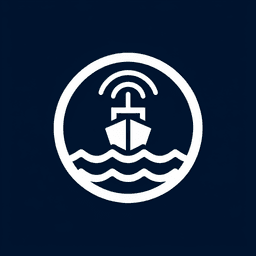
AIS: Definition and Examples of Automatic Identification Systems
January 16, 2025
AIS (Automatic Identification System)
The Automatic Identification System (AIS) is a crucial tool for maritime navigation and safety. It is an automated tracking system used on ships and by vessel traffic services (VTS) to identify and locate vessels by electronically exchanging data with nearby ships, AIS base stations, and satellites.
Purpose and Functionality: AIS is designed to enhance maritime safety by providing real-time information about a vessel's position, course, speed, and other navigational data. This information is vital for collision avoidance, especially in busy shipping lanes and ports.
Components: The system consists of a transponder on the ship that sends and receives data. The data includes the ship's unique identification, position, course, and speed, which are broadcasted at regular intervals.
Benefits for Sailors: For sailors, AIS offers several advantages:
- Improved situational awareness: By displaying the positions of nearby vessels, sailors can make informed decisions to avoid collisions.
- Enhanced communication: AIS facilitates better communication between vessels, allowing for coordinated maneuvers and safer navigation.
- Search and rescue operations: In emergencies, AIS can help rescue teams locate vessels quickly and accurately.
Limitations: While AIS is a powerful tool, it has limitations. It relies on VHF radio frequencies, which can be affected by range and interference. Additionally, not all vessels are required to carry AIS, particularly smaller recreational boats.
Conclusion: AIS is an indispensable part of modern maritime operations, providing essential data that enhances safety and efficiency on the water. Its integration into maritime navigation systems continues to evolve, offering sailors a reliable means of tracking and communication.
Understanding the Automatic Identification System (AIS) in Maritime Context
The Automatic Identification System (AIS) is a crucial technology in the maritime industry, designed to enhance safety and efficiency at sea. It is a short-range coastal tracking system that provides identification and positioning information to both vessels and shore stations. This system is essential for avoiding collisions and ensuring smooth navigation.
What is AIS in Maritime Terms?
AIS is an automatic tracking system that uses transceivers on ships and is utilized by vessel traffic services (VTS). It allows for the automatic exchange of shipboard information, including static and voyage-related data, between vessels and shore stations. This exchange is vital for maintaining situational awareness and ensuring maritime safety.
What is the AIS Requirement as per SOLAS?
According to the International Maritime Organization (IMO) and the Safety of Life at Sea (SOLAS) regulations, AIS is mandatory for all vessels over 500 gross tonnage (GT), vessels over 300 GT on international voyages, and all passenger vessels. This requirement ensures that these vessels are continuously broadcasting their position, which is crucial for maritime safety and navigation.
What are the Two Types of AIS?
There are two main classes of shipborne AIS: Class A and Class B. Class A is used on commercial vessels and provides more detailed information, while Class B is typically used on smaller vessels. Additionally, there are AIS base stations for shore use, AIS aids to navigation (AtoN), and AIS search and rescue transmitters (AIS-SART).
What is the Principle of AIS?
The principle of AIS is to facilitate the automatic exchange of navigational data between ships and shore stations. This data includes the vessel's identity, position, course, and speed, which are crucial for collision avoidance and efficient maritime traffic management.
In summary, AIS is an indispensable tool in the maritime industry, providing real-time data that enhances safety and operational efficiency. Its implementation is a testament to the industry's commitment to leveraging technology for safer seas.




